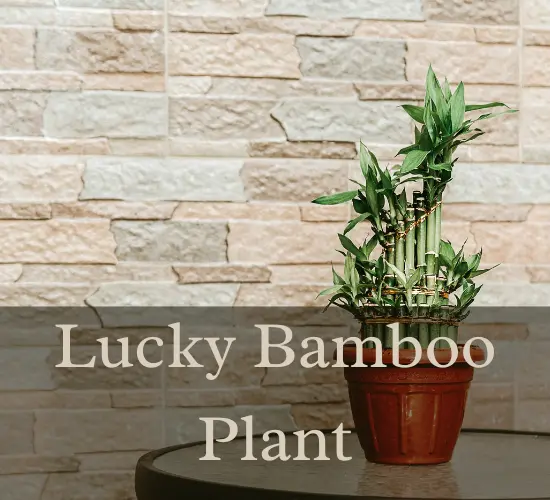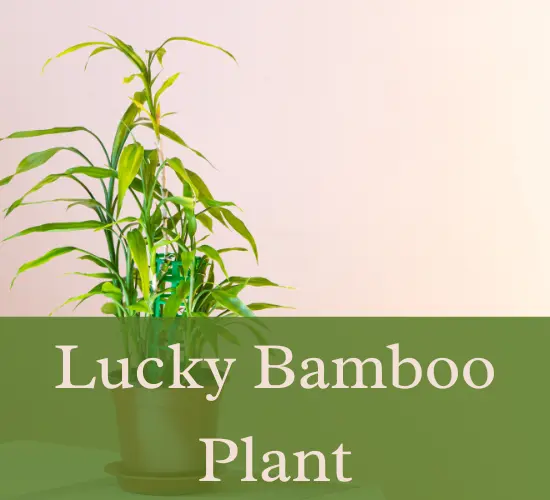Table of Contents
Yellow Leaves on Lucky Bamboo
Lucky bamboo(Dracaena Sanderiana) is a popular indoor plant that has gained significant popularity over the years because of its aesthetic appeal and association with good luck and prosperity in Feng Shui. However, it is not uncommon for lucky bamboo plants to develop yellowing leaves or stems, which can be a cause of concern for their owners.
In fact, according to a recent survey, over 50% of Lucky bamboo owners reported facing this issue at some point in time. While the yellowing of lucky bamboo may seem like a minor issue, it can be indicative of underlying problems that need immediate attention.
Overwatering, chemicals in water, too much direct light, temperature shifts, or over-fertilization are some of the common causes of yellowing. Therefore, it is essential to know the right care tips and tricks to revive your lucky bamboo and keep it thriving.
In this article, we will discuss the causes of yellowing in lucky bamboo, followed by some valuable tips and tricks to ensure the healthy growth and longevity of your plant.
Key Takeaways

- Yellowing leaves or stems can be caused by overwatering, chemicals in water, too much direct light, temperature shifts, or over-fertilization.
- Lucky bamboo prefers indirect bright light and thrives in temperatures between 65-95°F but avoids rapid temperature shifts.
- Water soil when the top 50% is dry and discard excess water to prevent root rot. Use distilled or rainwater if possible, or leave tap water out overnight to evaporate some chemicals.
- Lucky bamboo can recover if issues are caught early, but trimming yellowing leaves can help focus energy on new growth.
What Causes Yellow Leaves on Lucky Bamboo?
Yellowing of Lucky bamboo leaves or stems can be attributed to various factors, such as overwatering, chemical content in water, excessive exposure to direct light, temperature fluctuations, and overfertilization.
Overwatering is one of the most common causes of yellowing in lucky bamboo. When the plant is overwatered, the roots become suffocated, leading to root rot, which causes the leaves and stems to turn yellow and eventually die. To prevent this, it is recommended to water the plant when the top 50% of the soil is dry and discard any excess water to prevent the roots from sitting in water.
The chemical content in water can also cause yellowing in lucky bamboo. Tap water may contain added minerals and fluoride that can affect sensitive plants. To prevent this, it is recommended to use distilled or rainwater if possible. If tap water is the only option, it is best to leave it out overnight to allow some of the chemicals to evaporate before using it on the plant.
Additionally, changing the water weekly or as needed can keep it clean and prevent fungal and bacterial growth, which can also cause yellowing. Finally, it is important to fertilize the plant only once in early spring to prevent burning the roots, as overfertilization can also cause yellowing.
Proper Watering and Light
Proper watering and light are crucial factors for maintaining the health of Lucky Bamboo. Overwatering can lead to root rot, which can ultimately kill the plant. It is recommended to water the soil when the top 50% is dry and discard excess water.
Lucky bamboo prefers indirect bright light and can wilt if exposed to too much direct light or too little light. It is important to find the right balance of light intensity for the plant to thrive.
To give your lucky bamboo the best chance of survival, consider the following tips:
- Watering frequency: Lucky bamboo requires moderate watering. Water the soil when the top 50% is dry and discard excess water to prevent root rot.
- Light intensity: Lucky bamboo prefers indirect bright light. Avoid placing the plant in direct sunlight, which can damage the leaves. If the plant is not receiving enough light, it may wilt or turn yellow. Find a location in your home that provides the right amount of light for the plant to thrive.
- Balance: Finding the right balance of watering frequency and light intensity is key to maintaining a healthy lucky bamboo. Too much or too little of either can harm the plant. Keep a close eye on your plant and adjust accordingly to ensure it is receiving the right amount of water and light.
Additional Care Tips

One key aspect of caring for lucky bamboo is maintaining a balanced environment, as fluctuations in temperature or light can negatively impact the plant’s health, like a delicate ecosystem that requires precise conditions to thrive.
In addition to proper watering and light, some additional care tips can help revive your lucky bamboo. Trimming leaves is a natural part of the plant’s growth pattern, as older leaves at the bottom of the plant will naturally yellow and die off. However, trimming these leaves can also help focus the plant’s energy on new growth and prevent the yellowing from spreading throughout the plant.
Another important aspect of caring for lucky bamboo is monitoring its growth patterns and adjusting care accordingly. For example, if the plant is growing too quickly and becoming top-heavy, it may need to be repotted in a larger container or supported with stakes. On the other hand, if the plant is growing slowly or not at all, it may need more fertilizer or a change in lighting.
By paying attention to these natural growth patterns and adjusting care accordingly, you can help your lucky bamboo thrive and bring good luck and prosperity to your home or workspace.
Frequently Asked Questions
How do I propagate my lucky bamboo plant?
Propagating techniques for lucky bamboo involve cutting a stem with at least one node and placing it in water or soil. Care tips include using distilled or rainwater, providing indirect bright light, and avoiding over-fertilization. Successful propagation depends on proper care and attention to detail.
Can I grow lucky bamboo in soil instead of water?
While lucky bamboo is commonly grown in water, it can also thrive in soil. However, proper care is essential to maintain healthy growth. Tips include using well-draining soil, watering when the top inch is dry, and providing bright, indirect light.
What pests or diseases should I be on the lookout for with lucky bamboo?
Pest prevention is essential for healthy Lucky Bamboo. Common ailments include mealybugs, spider mites, and scale insects. Regular inspection and treatment with neem oil or insecticidal soap can prevent infestations.
How often should I prune my lucky bamboo plant?
To maintain the health and aesthetic appeal of lucky bamboo, pruning frequency depends on the desired shape. Shaping techniques include cutting the stem above a node or gently bending the stem. Always use sterile tools and avoid cutting too much at once.
Can lucky bamboo survive in low light conditions?
Lucky bamboo can survive in low light conditions but it may grow slower. To revive a dying plant, assess the cause of the issue such as overwatering or lack of nutrients, and make appropriate adjustments.
Conclusion
Yellowing lucky bamboo can be a frustrating issue for any plant owner. Fortunately, there are several steps you can take to revive your plant and prevent future yellowing. Overwatering, exposure to chemicals in water, too much light, extreme temperature shifts, or over-fertilization can all contribute to yellowing.
Proper care is the key to ensuring your lucky bamboo stays healthy and vibrant. Water your plant once a week, making sure to avoid standing water. Make sure your plant is not receiving too much direct sunlight, as this can cause the leaves to turn yellow. Additionally, avoid exposing your plant to extreme temperature changes. Finally, be careful not to over-fertilize your plant.
In conclusion, reviving yellowing lucky bamboo requires proper care and attention. By following these simple tips and tricks, you can ensure your plant stays healthy and vibrant.
Remember to:
- Water your plant once a week, avoiding standing water.
- Avoid too much direct sunlight.
- Be careful not to expose your plant to extreme temperature changes.
With a little bit of care, your lucky bamboo will continue to bring good luck and prosperity to your home.
1 thought on “Sunlit Serenity: Exploring Yellow Leaves on Lucky Bamboo”